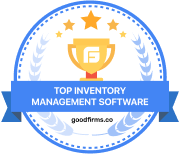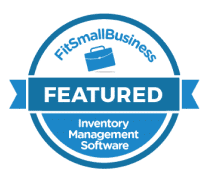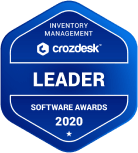What is Order Management?
Learn all about managing the entire life-cycle of order from the fulfillment center to reaching
the customer in these essential guides.
1. What is Order and Order Type?
As far as business is concerned, an order, in a layman language, is a request made by the customer to the eCommerce companies or a normal company or a vendor to purchase their products.
As per business dictionary, “a confirmed request by one party to another to buy, sell, deliver, or receive goods or services under specified terms and conditions. When accepted by the receiving party, an order becomes a legally binding contract.”
To learn more about this topic, click here.
Order Types
There are two types of orders in the eCommerce industry – Pre Order and Backorder.
Pre-order
Preorders are the type of orders that are placed when a product is about to come into the market or about to launch, and the company starts taking its orders before the launch. This is generally done to create a buzz among the customers so that the item gets off to a good start after getting launched.
Click here to know more about Pre Orders.
Backorder
Backorder is an order that is accepted by the retailer for the products that have gone out of stock. The retailer then requests the supplier of the manufacturer to send in more items to satisfy the demand and fulfill backorders.
Taking backorders helps a retailer to stay in the competition and also cater to its exclusive customers who are loyal and would not want to buy the product from anywhere else.
Click here to know more about backorders in detail.
What is Order Management?
Order Management is the process that starts when a customer places an order and ends when the order is fulfilled. Order management allows businesses to coordinate the entire fulfillment process.
It is an important step, particularly when scaling your business. Order management helps you to automate and streamline the mundane process of order receiving, tracking, and fulfillment. Otherwise, you’ll be overwhelmed by the vast amount of orders coming in.
2. Importance of Order Management
Implementation of Order Management is time-consuming and can seem like an extra effort. So, one might be skeptical about it and ask a question, “how Order Management is going to help me?”
Here are the top 3 reasons why you should implement Order Management in your organization.
Track Overstocking and Understocking
Both overstocking and understocking could pose a deadly threat to your business. Overstocking can make you look like a sitting duck with less amount of liquid cash. On the other hand, understocking can mean delayed customer delivery, which is bad for your brand value.
Order Management helps you manage your seasonal sales based on customer purchase history. This way, you are safeguarded from both overstocking and understocking.
Fewer mistakes on fulfilling Orders
When you need to take care of only a few orders a day, everything seems normal. However, if your business kicks off, you will have to face a hefty amount of orders coming in each day. Errors will become inevitable.
Delivering wrong orders, wrong addresses, and shipping delays will hamper your business reputation. Order management streamlines the process and omits the possibility of human errors.
Saves time
If you run an ecommerce business, you are an entrepreneur and a visionary. Without proper planning of handling your order management, most of your resources will spend hours in mundane order fulfillment tasks. I am sure this is not what you had in mind when you first started.
To avoid spending valuable resources into all these time-consuming tasks, you can either hire a professional 3PL company to take care of all your order fulfillment tasks. However, it will cost a lot of bucks. The alternative to it is to invest in an Order Management System, the next-gen cheap and affordable automated order management solution.
3. What is Order Lead Time?
Importance of Order Lead Time
Order Lead Time is the measure of the Order Management process of an ecommerce business. In layman terms, it is the amount of time taken by an ecommerce retailer to fulfill an order received from a customer.
There are 4 different types of Order Lead Time, which can be calculated as follows:
Requested Order Lead Time = Wish Date – Order Entry Date
Quote Order Lead Time = Quote Date – Order Entry Date
Actual Order Lead Time = Delivery Date – Order Entry Date
Confirmed Order Lead Time = Confirmed Date – Order Entry Date
As we talked about it earlier, Order Lead Time is an important KPI for measuring the Order Management Process. However, it’s not its only use.
Order Lead Time plays a critical role in determining the safety stock inventory for your business. Based on average order lead time, you can calculate the amount of safety stock, you will require in your arsenal.
The order lead time data can also guide you for applying a correct reorder point formula.
Monitoring order lead time, and implementing appropriate strategies helps to reduce it. Reducing lead times have many untold benefits as follows:
- Flexibility during seasonal peak sales
- The more efficient output than your competitors
- Timely inventory checks for overstocking and understocking
- Meeting deadlines consistently
- Faster order fulfillment increases cash flows
To know more about order lead time, click here.
4. What is Order Processing?
Order processing is the complete workflow from order placement to delivery. Steps involved in order processing include picking, sorting, tracking, and shipping.
There are factually three significant ways by which order processing can be fulfilled. Depending on your business size and need, you can choose any one of the following.
Warehouse fulfillment
Warehouse fulfillment is a 2 in 1 process. It serves both the purpose of storing and managing the inventory and fulfillment of orders. Warehouse fulfillment is the best option for those who want to execute every order themselves.
Dropshipping
If you are a growing business, maybe you are not equipped with a full-fledged warehouse facility. For all your fulfillment needs, you may consider dropshipping.
Dropshipping is a method of retail fulfillment where a middle organization will be involved who deals with the flow of products from your organization / supplier to the end customer.
In layman terms, dropshipping can be explained in 3 easy steps.
- The retailer adds products to its online store
- Customer purchases the product online through an ecommerce store
- Dropshipper gets notified and delivers the product to the customer by collecting it from the retailer / supplier.
Learn more about dropshipping in the article here.
Third-party fulfillment
It is the most complex form of outsourced fulfillment services. A 3PL fulfillment comprises everything associated with order fulfillment. These include handling order processing, renting warehouse space, picking and packing, and delivery of orders to end customers. You may use any one of its services.
In this type of order fulfillment, generally, retailers send their inventory to the 3PL company or, in some cases, have it sent directly from the supplier. The 3PL company then takes care of the whole order fulfillment process.
5. What is Order Fulfillment?
Whenever a retailer receives an order from a customer, it needs to be processed before being shipped. Order Fulfillment is all those processes that exist between receiving and delivery of the order to the end customer is known as Order Fulfillment.
The process can be divided into three steps.
Order Picking
This is the first step towards order fulfillment. Whenever a customer places an order, a person needs to go and pick all the desired products in that order from the warehouse.
As simple as it sounds, let me assure you, this is a mundane and time-consuming task. If your warehouse is small, you probably won’t notice the impact order picking can cause on your order lead time. But, in the case of vast warehouses with millions of products, finding the product could be like finding a needle in a haystack.
Without proper order picking best practices, your order lead time will suffer a lot and so will the customer satisfaction.
To learn more about order picking, please click here.
Order Packing
After the tedious task of finding all the items from a giant warehouse, comes order packing. In this process, we deal with the packing of all the items before its shipment.
The packing process consists of choosing the right material and size for packing all the items, weighing the package, and labeling its packing slip.
Packing Slip
It is an important document that lists the contents of the package prior to its shipment. It includes weight, dimensions, item details, and quantities along with their SKU numbers.
Order Shipping
The third stage of order fulfillment is Order Shipping. After the packing is done, it’s ready for shipment. But before the shipment could be made, there are things that need to be figured out. For example,
Shipping Carriers
Based on the geolocation of customer delivery, choosing the shipping carrier matters. In this way, you can save some extra bucks.
Shipping Cost Calculator
The customer expects no shipping cost. Unfortunately, the real world doesn’t work like that. You need to take into accord the cost of product shipment based on parameters like package dimensions and weight.
Shipping Label & Sizes
Shipping labels contain important information for a carrier to ship the package from the source-destination (warehouse) to the ending destination(customer).
The information present on the shipping label is –
- Country
- Postal code
- Tracking number
- Date
- Package quantity
- Weight
- Address validation
- Ship street, city and state (area)
Shipping labels also contain information regarding the content of the shipment, especially for international shipments. Click here to know more about Shipping labels and sizes.
International Shipping
Almost 90% of the global trade relies on the international shipping industry, with over 50,000 merchant ships from 150 nations propelling the business. While these are promising figures, they also translate to a confusing plethora of options and legalities for small businesses and newbies willing to sell their products overseas.
To have a detailed understanding of the process of International Shipping, please click here.
Customs Form / Commercial Invoice
If your product is going to cross international shipping borders, you need to have all the papers ready and in order to avoid any unnecessary shipping delays.
A commercial invoice consists of all the necessary details related to shipping as well as the trade between the buyer and the seller.
The three parts of a commercial invoice are as follows
- Transactional Information
- Import-Export Information
- Shipping Information
Click here to read more about the commercial invoice.
RMA
Return merchandise authorization (RMA), a numbered authorization offered by the seller, is a section of the process of returning or replacing a product to receive a refund, replacement, or repair during the product’s return or replacement time offered by the company.
Click here to know more about RMA.
Return Labels
Return labels, no matter how much ever you wish that you don’t have to use one, you can never escape them. They act as both goodwill value additions and tentative cost additions, making them a strategically tricky option. Including a pre-printed return label makes your customers feel that they are in control as upto 30% of the processed orders end up getting returned.
6. Order Management System (OMS)
Importance of OMS
An Order Management System (OMS) is a software that enables the user to document the order entries, notify the inventory management system or manager to make the relevant changes in the inventory, create a picklist, packing slips. Manifests, manage the order payment status, and whether the order is confirmed or not.
The order management system is the central part of the entire order fulfillment process, and thus it needs to be fast and efficient.
To know more about the order management system, click here.
7. Key Metrics for Order Management
There are numerous parameters to ensure that the order management system works efficiently, but the major metrics that need to be considered are –
- Rate of Return
- Picking Accuracy
- Order lead time
- Purchase Frequency
Let’s go through one by one in this article.
8. Improving Order Management Efficiency
Having an efficient order management process is the key to a successful ecommerce business. But is it that easy to have a fully functional and highly efficient order management system?
Definitely not, but if you follow the best practices to enhance the order management efficiency suggested by orderhive, it will become a bit easier.
- Centralize all your orders in one system
- Real-time Sync of Information
- Automate the Order Fulfillment Process
- Integrate with Suppliers
- Maintain Accuracy at all Levels
Let’s go through one by one in this article.
PRODUCT
LEARN IN-DEPTH
- Inventory ManagementLearn the essentials of inventory management in this collection of guides.
- Warehouse ManagementLearn the requisites to achieve a fully functional warehouse.
- Order ManagementThe entire life-cycle of order from a fulfillment center to reaching the customer.
- Shipping ManagementGet to know A-to-Z about shipping including its types, important terms, and costs.
- Enterprise Resource PlanningLearn the essentials of Enterprise Resource Planning in this complete guide to ERP.
- Supply Chain ManagementLearn about how supply chain management is all about getting the right products at the right time.
- eCommerce MarketingLearn all about various methods for promoting your online stores to the right target audience.
- Shipping LabelsGet to know everything about shipping labels – its types, how they are made, important terms.
- 3PL CompaniesConnect with all 3PL companies across multi-nations from here.
- Dropshipping CompaniesConsolidated list of Dropshippers internationally for your business
© Copyright 2022 Cin7 Orderhive Inc. All rights reserved. Various trademarks held by their respective owners.




 Back to the table of content
Back to the table of content




